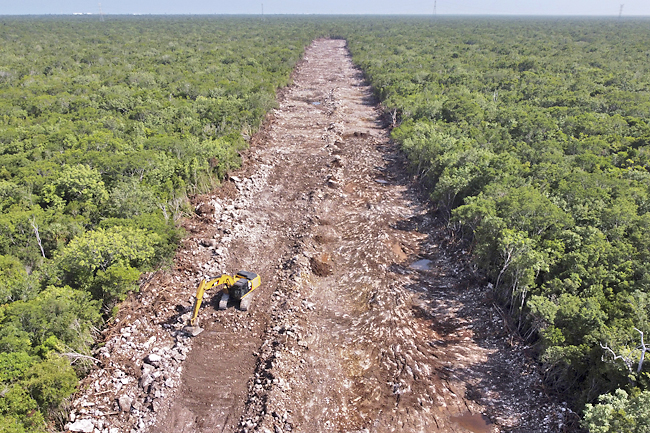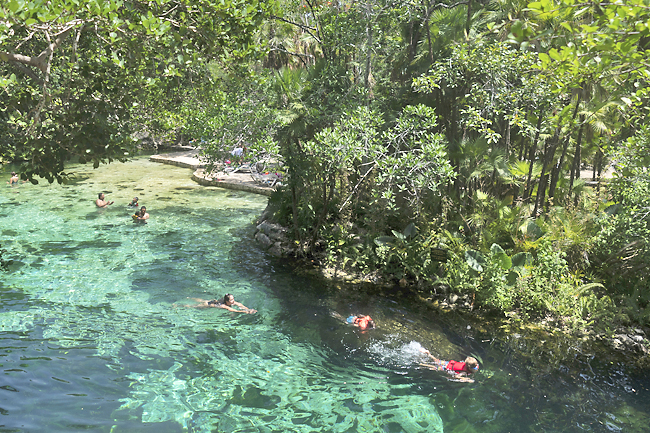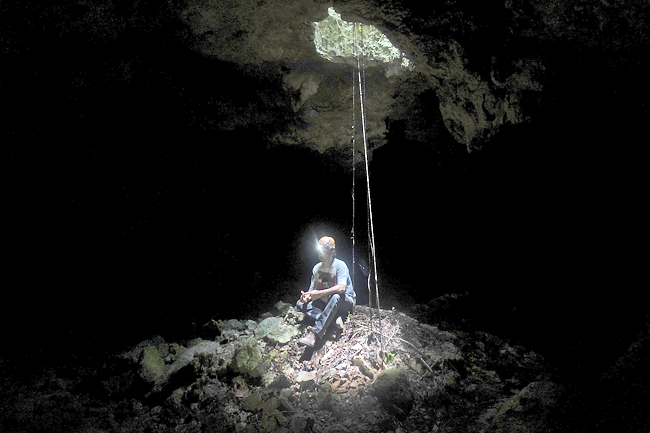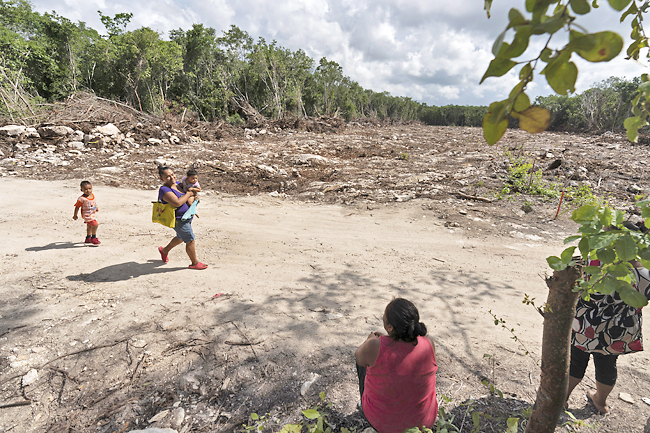VIDA Y ESPERANZA, MEXICO (AP) – Mexico’s ambitious Maya Train project is supposed to bring development to the Yucatan Peninsula, but along the country’s Caribbean coast it is threatening the Indigenous Maya people it was named for and dividing communities it was meant to help.
One controversial stretch cuts a more than 68-mile swath through the jungle between the resorts of Cancun and Tulum, over ancient, complex and fragile underground cave systems.
It is one of President Andrés Manuel López Obrador’s signature projects and has drawn protests from environmentalists, who have blocked backhoes from knocking down trees.
But for the largely Maya inhabitants of the village of Vida y Esperanza – a clutch of about 300 people and 70 houses whose name means “Life and Hope” – the train is going to run right by their doors. They fear it will pollute the caves that supply them with water, endanger their children or even cut off their access to the outside world.
A few miles down the corridor of felled trees where the train is supposed to run, archaeologist and cave diver Octavio Del Rio pointed to a cave that lies directly beneath the train’s path. Its thin limestone roof would almost certainly collapse under the weight of a speeding train.
“We are running the risk that all this will be buried, and this history lost,” Del Rio said.
López Obrador dismisses critics like Del Rio as “pseudo environmentalists” funded by foreign governments.
As with his other signature projects, the president exempted the train from environmental impact studies and last month invoked national security powers to forge ahead, overriding court injunctions.




Critics said that threatens Mexico’s democratic institutions.
The president countered that he just wants to develop the historically poor southern part of Mexico.
The Maya themselves have spent centuries scraping a living from the limestone bed of the dry tropical jungle, and they know the delicacy of the environment’s balance.
“I think that there is nothing Maya” about the train, said Lidia Caamal Puc, whose family settled here 22 years ago. “Some people say it will bring great benefits, but for us Mayas that work the land, that live here, we don’t see any benefits.”
“Rather, it will hurt us, because, how should I put it, they are taking away what we love so much, the land.”
When marines showed up last month to start cutting down trees in preparation for the train on the edge of the village, residents who hadn’t been paid for their expropriated land stopped them from working.
The head of the village council and a supporter of the train, Jorge Sánchez, acknowledged that the government “had not paid the people who were affected” even though the government has said they will get compensation. Sánchez said the project “will bring jobs for our people”.
The 950-mile Maya Train line will run in a loop around the Yucatan Peninsula, connecting beach resorts and archaeological sites. But in Vida y Esperanza, the train will cut directly through the narrow, four-mile dirt road that leads to the nearest paved highway.
Unless the government tourism agency that oversees the train project constructs a large overpass bridge above the tracks, villagers would be forced to take a back road four times as long to get to the highway, making it too expensive to live there.
Fonatur, the agency, pledges the overpass will be built, but the village has seen promises go unfulfilled in the past. The economics of the train project are doubtful, in part because no credible feasibility studies were done.
International tourism to the country has recovered from the pandemic; just over 10 million tourists arrived in Mexico from January to June, 1.5 per cent higher than the first half of 2019. But overall tourist spending remains below pre-pandemic levels.
Army engineers plan to fill the underground caves to support the weight of the passing trains, which could block or contaminate the underground water system.
The high-speed train can’t have at-grade crossings, and won’t be fenced, so that 100-mile per hour trains will rush past an elementary school – where most of the students walk to get there.
The project has also divided Vida y Esperanza.
Luis López, 36, who works at a local store and opposes the train, said worries that the cenotes – water-filled caves the villagers rely on – “will be filled or contaminated. I survive on the water from a cenote, to wash dishes, to bathe”.
Many residents, who rely on diesel generators, would much rather have electricity than a tourist train that will rush by and never stop there.
But there are some people in Vida y Esperanza who support the train project, like Benjamin Chim, a taxi and truck driver who is already employed by the Maya Train. Chim will lose part of his land to the project. But he said he doesn’t care, noting “it is going to be a benefit, in terms of jobs”.
“They are taking a bit of land, but it’s a bit that doesn’t have any symbolic value, for me it doesn’t mean anything,” Chim said.
While the president’s supporters have claimed that anybody who opposes the train isn’t really Mayan, that would be news to people in Vida y Esperanza, where residents swear that Mayan spirits, known as “Aluxes”, inhabit the forest.
Bright blue-green Toh birds, tarantulas, blue morpho butterflies, iguanas and the occasional jaguar cross the roads and jungle.





